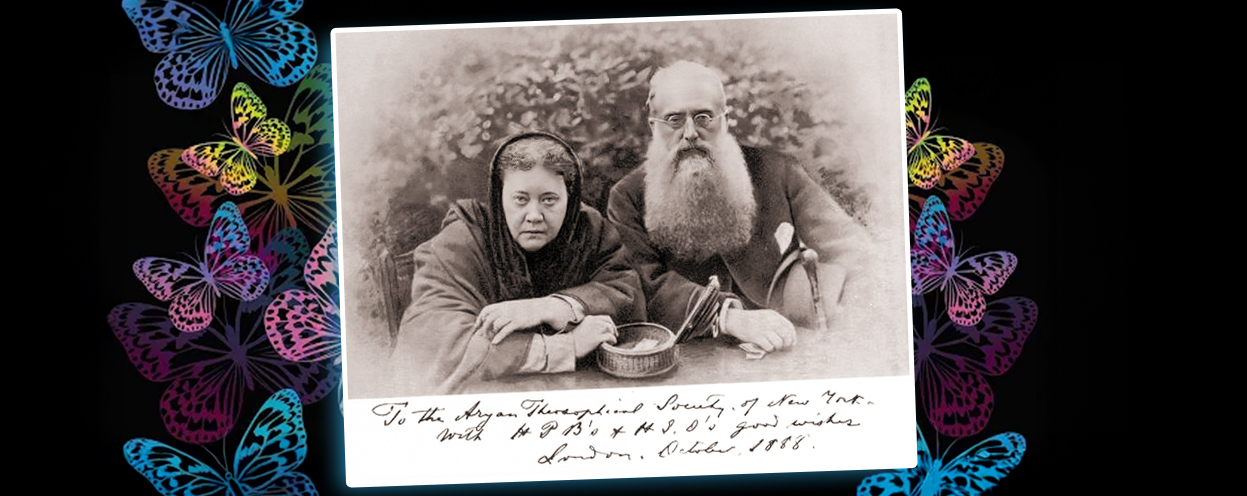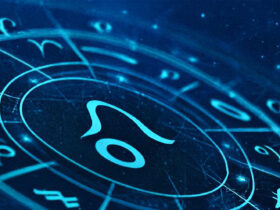The Dark Origins of the New Age

It is curious indeed that in our times of rampant egoism an idea can take hold that not only indulges human self-conceit (“you will be gods”) but also encourages people to become nonentities and presents that nothingness as a worthy goal.
The New Age has different stages, and its definition is determined by the stage we choose to look at. The first stage establishes the widespread belief that the New Age is an international movement supporting ecology, health foods, and alternative medicine. The movement wraps itself in mildness and peacefulness, and seeks what is common to all world religions; what draws them together and augurs well for the future. The future will bring the creation of a happy, ideologically united, global society. At this level, a great deal is made of tolerating various differences, minorities, and dissimilarities, which happen to all fit into the New Age Movement—a bottomless bag, as it were.
The New Age ideology dictates that the time has come for the Age of Pisces to make way for the Age of Aquarius. Hence its fondness for the activities of various spiritual “masters,” gurus, and messiahs. Thus, the first-stage origins of the New Age are murky but still manage to retain a little of Truth’s sunny light. The idea of an international community living in peace and harmony, caring about the world, about man’s physical and spiritual health, is very attractive. Many noble-minded people fall for this idea, while remaining ignorant of the true intentions and goals of the new Age.
The second stage of the New Age is for more sensitive people with greater spiritual needs. This group seeks the meaning of life and a deepening of their individuality and relationship with God (or with the gods). Herein lies the interest in yoga, transcendental meditation, mind control techniques, and divination; and the fascination with so-called pyramids, chakras, auras, UFOs, etc. Sometimes these practices are propagated by people who believe that they are in a state of grace and declare themselves Christians. In pursuing such activities, however, they have distanced themselves from the one true God; no conviction to the contrary can change that fact. For the second-level definition of the New Age has a spiritual dimension as well as a propagandist one—and the spiritual dimension is alien. Our God is a jealous God. We are not to have foreign gods over and above him; nor, indeed, beside Him. “Do we really want to arouse the Lord’s jealousy; are we stronger than He is?” (1 Cor 10: 22)
This second point of entry into the New Age is the first radical step toward accepting its ideological foundations People who have been “opened” to new techniques of self-salvation (in fact, the techniques are old, having been taken from other religions and traditions) are apt to support any religious or cultural mishmash. No distinction is made between treating the neighbor who practices another religion with respect and respecting (in the sense of accepting) his teachings or the inspirations coming from his gods. The true intentions of the New Age are of course obscured by safe-sounding publicity, such as “gymnastics,” “development,” and “making the most of one’s potential.”
Now we arrive at the third and last stage. We are getting to the very bottom—in fact, to the crux of the matter. We are in total darkness. The New Age ideology has, as its deepest source, contact with spirits through trances or visualization techniques. This practice cannot be reconciled with the words of Jesus Christ: “You cannot drink the cup of the Lord and the cup of demons as well; you cannot have a share at the Lord’s table and the demons’ table as well” (1 Cor 10: 21).
It is common knowledge that the New Age movement did not spread throughout the world until the second half of the twentieth century. But many earlier philosophers, writers, ideologues, and champions toiled hard to give it its modern form (among them, Helena Blavatsky). Quite a few were spiritual media favoring all sorts of “astral projection,” willingly opening their minds to the influence of actual spirits—but not, unfortunately, the Holy Spirit. The passion with which these people undertook such activities is frightening; many became possessed by the devil. One historical fact forces us to reflect deeply: the first ideologues of the New Age were inspired during spiritualistic séances. Spirits dictated certain precepts to them that later became the foundation stones for the New Age philosophy of life. Having been brought up in the culture of the twentieth century, we are used to priding ourselves on the achievements of our reason and even its mistakes, simply because we are capable of reasoning. But in the meantime we forget Who gave us our reason and for what purpose. We also forget that—just as once long ago in paradise—the Father of Lies keeps us company and that he willingly bolsters our imperfect thoughts with his own; but sure enough, when the time comes, he will mercilessly square up with us for his efforts. I even suspect that he is behind each and every spiritual and religious mistake committed throughout man’s history—and always will be. “He was a murderer from the start; he was never grounded in the truth; there is no truth in him at all. When he lies he is speaking true to his nature, because he is a liar, and the father of lies” (Jn 8: 44).
A Sad Life
Helena Petrovna Blavatsky’s life story is extremely depressing although, from a purely human perspective, she had an unusual career. She was the founder of the Theosophical Society (1875), the inspiration for Hitler’s Nazi theories, the grandmother of modern feminism in the fight against the “God-Man’s” terror. Her name is found on the front pages of occult encyclopedias, and for years she inspired publishers of satanic magazines, including Rudolf Steiner, the creator of anthroposophy and editor of Lucifer.
Helena Blavatsky was born in 1831. Her mother was a noblewoman, her father, a German officer. Following the early death of her mother, she lived with her grandparents. When she was seventeen years old, she married. Three months later she fled her husband. Throughout her life she obsessively denied consummating this marriage or any other relationship with any of the many men who were her life partners. Various sources indicate, however, that she was the mother of Yuri, a deformed child, who died at the age of five. (Blavatsky never acknowledged Yuri publicly and maintained that he was the son of her friends.)
Blavatsky led a scandalous and adventurous life. She journeyed throughout the world: to Turkey, Egypt, France, Quebec, England, South America, Germany, Mexico, Greece, and India. Her stay in Tibet was particularly significant; for two years she thoroughly studied the local occult there. One of her opponents was Father Władysław Dębicki, Blavatsky’s contemporary, a critic of spiritualism, and author of The Great Bankruptcy of The Mind, who gave no credence to her Tibetan tales. Father Dębicki, in a report on the 1889 congress of spiritualists held in Paris, called her an outright “virtuoso cheat.” He also quoted from a report issued by the Psychological Research Society in England, which summarized Blavatsky’s activities thus: “we believe that she will be written into history as one of the most cunning, shrewd, and fascinating imposters of our century”.
With the perspective of time, however, it seems that neither Father Dębicki nor the Society members appreciated the actual demonic forces that shaped Blatavsky’s pronouncements. 1873 was an important year in her life, for at this time she arrived in New York as an established spiritualistic medium. She showed off her extraordinary gifts, such as levitation, the materialization of objects, clairvoyance, clairaudience, and telepathy. She soon met the journalist and spiritualist Henry Steele Olcott, with whom she founded the Theosophical Society in 1875 (from the Greek Theos, God, and Sophia, wisdom). The Society exists to this day and its mission is to spread the belief that we can do without God’s grace and mercy, without Jesus Christ; in fact, we can only come to know God through appropriate spiritual techniques and practices that exclusively serve to enlighten the elect. Knowledge is gained during spiritualistic séances, magic rituals, and pagan-related spiritual practices (among others, shamanism, astral projection, and channeling). The end justifies the means. The theosophists’ banner cry is that “there is no greater religion than truth”. But what can one do when the teacher in the School of Truth is Father of Lies himself?
Medium Blavatsky
For many years, Helena Blavatsky practiced so-called automatic writing and other occult forms proper to a medium. In a frightening account she writes, “I can only say that my inspiration definitely comes from without; more, it is as if someone were entering into me. It is not I who speak and write, but that something that enters me…it thinks and writes for me…I become akin to a repository of someone’s knowledge…someone comes and engulfs me like a dark cloud; I am pushed deep into myself, and then I am no longer myself, but someone completely different”. The God of the bible, the only true God, the Creator and Redeemer of the world, warns, “There must never be anyone among you who . . . practices divination, who is soothsayer, augur or sorcerer, weaver of spells, consulter of ghosts or mediums, or necromancer. For anyone who does these things is detestable to Yahweh your God” (Deut 18: 10–12). Blatavsky ignored this warning and placed all her trust in the unknown spiritual being.
Soon this “somebody” was fully revealed; during a séance, the spirit identified himself to Blavatsky as Master Djwal Khul from Tibet. Over the course of the next few months and several meetings, he dictated a complete set of theses that became the written instruction manual for her philosophy and for the philosophy of other New Age ideologues. But that was not the end of Djwal Khul. After Blavatsky’s death in 1891, her successor and zealous student Alice Bailey had further spiritualistic meetings with the spirit “D.K.” Bailey was convinced that he had sent her a message about the need to destroy Christianity. At his command she wrote down a list of churches and religions earmarked for destruction. The spirit D.K. later returned during séances run by the theosophist Helen Roerich (also wife to a fellow theosophist), who translated Blavatsky’s greatest work, The Secret Doctrine, into Russian twenty years after Blavatsky’s death
Helena Blavatsky’s attitude was unequivocally anti-Christian. She had initially declared herself a Hindu, then a Buddhist, and eventually disseminated various publications on Satan’s cult, whom she worshipped as the Source of Light and wisdom, crediting him with a power greater than Jesus Christ’s. On the other hand, she hurled vulgar abuse at God, committing blasphemy and verbal profanation against Him “who so loved the world that he gave his only Son, so that everyone who believes in him may not perish but may have eternal life . . .” (Jn 3: 16).
In Blavatsky’s conception the “real god” is an impersonal god. The laws of reincarnation govern human life. A person can achieve extraordinary powers—and ultimately divine power—through enlightenment, which he attains by his own efforts at spiritual exercises. That story is nothing new under the sun. The poor woman was taken in by the oldest lie on earth: “your eyes will be opened and you will be like God” (Gen 3: 5).
The New Age: a Foreign Body in Europe
Clearly, the beliefs that have sprung from the historical sources of the modern New Age are totally opposed to Christianity’s centuries-old culture and traditions. The New Age is apparently willing to absorb anything of the world’s religions that can serve humanity and advance civilization. But that willingness does not extend to Christ’s teachings on sin and salvation. Attempts to portray Christ as one of the great gurus or the incarnation of Buddha or Krishna merely smack of black humor.
Christianity will never fit any New Age concept because our God is a Person. He is a personal God, who created other persons (human persons) in His own image. For this reason, the only possible relationship in Christianity is a personal relationship between one Person and another—God and His creature—with all the implications such a relationship entails: one life, one soul, one love, one choice, one death, one judgment, and so on. The New Age Energy-god, Consciousness-god, Self-god, which absorbs and dissolves beings as impersonal as itself, is alien to our revelation and emphatically incompatible with the truth of the Old and New Testaments. Rather than leading to the promised paradise on earth, New Age philosophy can instead be a road to spiritual self-destruction. Of course, that annihilation may be exactly what Lucifer, whom Blavatsky revered, may be after: if people do not believe that a personal God exists, they are sure to reject the existence of a personal Evil. (Surely we can detect a smart tactical move here.) It is our good fortune that God’s children have as their advocates the Almighty Father and Mary Most Pure. We can be confident that, in the end, hell has no chances. “Thank God for giving us the victory through Jesus Christ our Lord” (1 Cor 15: 57).
Małgorzata Nawrocka
Translated by Alicja Kozłowska






